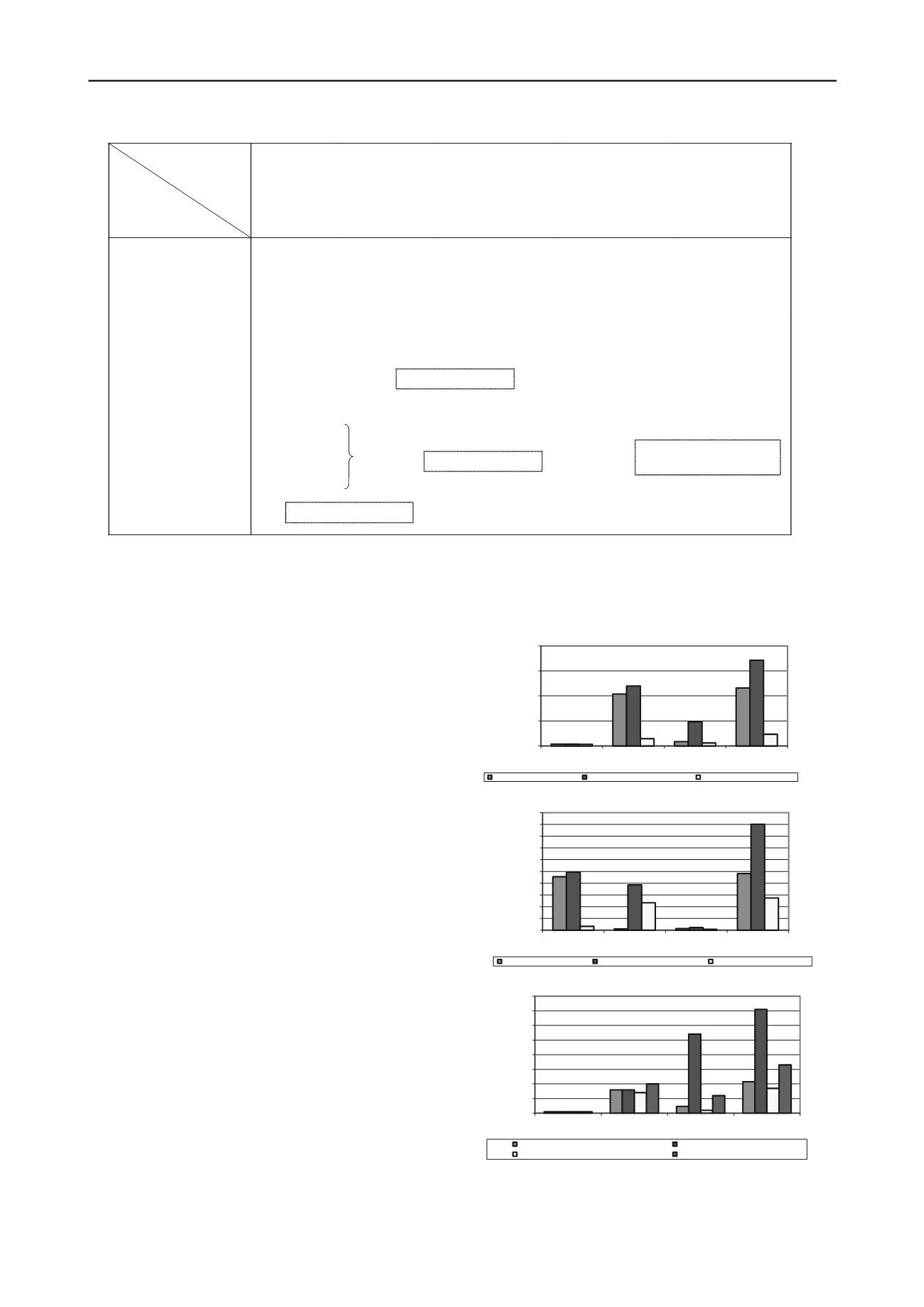
3216
Proceedings of the 18
th
International Conference on Soil Mechanics and Geotechnical Engineering, Paris 2013
Proceedings of the 18
th
International Conference on Soil Mechanics and Geotechnical Engineering, Paris 2013
2
2 TOOL-BOX FOR SUSTAINABLE MANAGEMENT
2.1
Overview of tools
There are several tools that could be used for sustainable
assessment of contaminated sediments. The starting point for
tools in decision making has to be based on an understanding of
the nature of the decision that should be taken and the function
and focus of the tool (de Ridder, et al., 2007). Therefore, the use
of assessment tools depends on the decision level as well as the
decision phase (se Figure 2).
Within the SMOCS project several case studies on
assessment tools such tools have been performed. In this paper
we present results from case studies using life cycle assessment
(LCA) and multi criteria analysis (MCDA).
2.2
Life cycle analysis (LCA)
The purpose of a life cycle analysis (LCA) is to find out where
in the life cycle the environmental load is the greatest and from
what the impact is generated (ILCDA, 2011). This is mainly
done through determining a material and substance flow. Thus
is possible to assess the environmental impacts associated with
all the stages of a product or a service/action life from-cradle-to-
grave.
In the SMOCS project different management options of
dredged contaminated sediments have been assessed by LCA
(see Figure 3). The case studies have been based on sediment
management in three ports; Port of Oxelösund, Sweden, Port of
Gävle, Sweden and Port of Hamburg, Germany.
In the case studies of Port of Oxelösund and Port of Gävle,
three possible management scenarios were compared. The
scenarios were 1) utilization of sediment in quay construction
by stabilization/solidification, 2) disposal in landfill and 3)
disposal at sea. In the case study of Port of Hamburg, four
management scenarios were compared. The scenarios were 1)
disposal in river, 2) disposal at sea, 3) utilization of sediment in
road construction or as landfill cover by METHA (Mechanical
Treatment of Harbour Sediment), and 4) dewatering and
disposal in landfill.
Figure 3. Port of Oxelösund, Port of Gävle, Sweden and Port of
Hamburg, Germany (from top to bottom)
Decision phase
Decision level
[Decision maker]
Problem
investigation
Finding and
analyzing options
Optimizing options
Implementation
Follow-up
Baltic Sea Region level
[e.g. Helcom]
Focus is to protect impacts on
global/EU and BSR level
Standard values
Objectives and targets
BSR indicators/indices
National level
[e.g. EPA or responsible
authority]
Focus is to protect impacts on EU
and national level
Consequential LCAs
LCC
(costs for the society)
Policies
Guidelines
Indicators/Indices
Project level
[e.g. port together with
relevant permitting authority]
Focus is to protect impacts on
regional/local level
Screening LCA
(based on existing data)
LCC
(project costs)
CBA
RA
Substance flow analysis
MCDA
Process tool e.g. MDST
Participative tools
MCDA
Participative tools
Consultation and
communication
LCA-stand alone
(on chosen alternative)
EIA
Environmental Management System (EMS)
Monitoring and evaluation
(using e.g. pressure indicators)
Scenario analysis
SEA
Participative tools
Figure 2. Examples of when different types of assessment tools which could be implemented in a decision process
(Lundberg, et al, 2011).
0,0E+00
1,0E+04
2,0E+04
3,0E+04
4,0E+04
Dredging
Production of
material
Transport and
construction
Total
CO2 equivalents, Kg / functional
unit
Scenario 1 (Stabilisation) scenario 2 (Disposal in landfill) scenario 3 (Disposal at sea)
0,0E+00
2,5E+04
5,0E+04
7,5E+04
1,0E+05
1,3E+05
1,5E+05
1,8E+05
2,0E+05
2,3E+05
2,5E+05
Production of
material
Transport
Construction
Total
CO2 equivalents,Kg / functional
unit
Scenario 1 (Stabilisation) Scenario 2 (Disposal in landfill) Scenario 3 (Disposal at sea)
0,0E+00
5,0E+03
1,0E+04
1,5E+04
2,0E+04
2,5E+04
3,0E+04
3,5E+04
4,0E+04
Dredging
Production of
material
Transport and
construction
Total
Co2 equivalents, Kg / functional unit
Scenario 1 (Disposal in river)
Scenario 2 (Disposal at sea)
Scenario 3 (Metha treatment)
Scenario 4 (Disposal in landfill)


